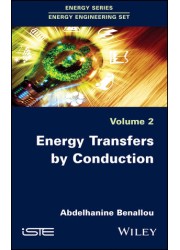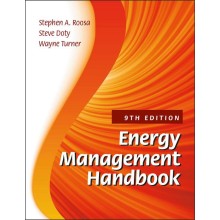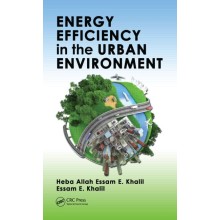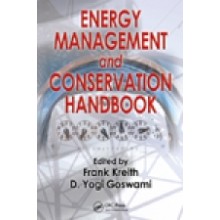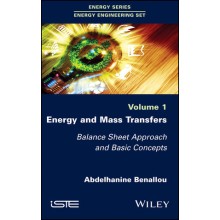Energy Transfers by Conduction Volume - 2: 2018
Quantity:
-
Add to Compare
While the topic of heat and mass transfer is an old subject, the way the book introduces the concepts, linking them strongly to the real world and to the present concerns, is particular. The scope of the different developments keeps in mind a practical energy engineering view.
Preface ix
Introduction xi
Chapter 1. Fundamental Equations of Conduction 1
1.1. Introduction 1
1.2. General equations of conduction 2
1.2.1. Expressing the term (I – O) 2
1.2.2. The term “generation” 4
1.2.3. The term “accumulation” 4
1.2.4. Energy balance equation 5
1.3. Equations of conduction in different coordinate systems 7
1.3.1. When l is not constant 8
1.3.2. When l is constant 9
1.3.3. Simplified cylindrical and spherical coordinates 9
1.3.4. One-dimensional conduction 10
1.4. Reading: metal tempering 10
Chapter 2. Conduction in Steady State and Applications 13
2.1. Introduction 13
2.2. Equations of conduction in steady state 13
2.2.1. Expressions in the different coordinate systems 14
2.2.2. Simplifications in the case of one-dimensional conduction 14
2.3. Applying to single-layer walls 15
2.4. Concept of thermal resistance 16
2.5. Applying to composite or multi-layer walls 17
2.6. Applying to cylindrical walls 20
2.7. Applying to composite cylindrical walls 23
2.8. Applying to spherical walls 24
2.9. Case of composite spherical walls 26
2.10. Convective-type boundary conditions: case of a single-layer wall 28
2.10.1. Internal convection resistance 29
2.10.2. External convection resistance 29
2.10.3. Conduction resistance 29
2.10.4. Expressing the flux as a function of Ti and Te 29
2.11. Composite walls with convective boundary conditions 32
2.11.1. Illustration: calculating heat losses through the walls of an industrial furnace 33
2.12. Parallel resistances with convective boundary conditions 38
2.12.1. Illustration: composite wall with parallel thermal resistances 39
2.13. Composite cylindrical pipes with convective boundary conditions 47
2.13.1. Illustration: transfer through a composite cylindrical wall 48
2.14. Composite spherical installations with convective boundary conditions 51
Chapter 3. Conduction Applications in Thermal Insulation 55
3.1. Introduction 55
3.2. The main insulation materials 56
3.2.1. Cork 56
3.2.2. Sawdust and wood wool 57
3.2.3. Hemp 57
3.2.4. Cellulose 58
3.2.5. Glass and rock wools 59
3.2.6. Polyurethane foam 61
3.2.7. Expanded polystyrene 62
3.3. Choosing a suitable thermal insulator 64
3.3.1. Optimum heat-lagging thickness for plane walls 66
3.3.2. Heat-lagging cylindrical jackets 75
3.3.3. Heat-lagging spherical containers 87
Chapter 4. Conduction Applications in the Reduction of Heat Losses in Construction 99
4.1. Introduction 99
4.2. Thermal building regulations 100
4.3. Calculating losses through building partitions 105
4.3.1. Expressing the flux of energy losses 105
4.3.2. Notations specific to building energy efficiency calculations 106
4.3.3. Calculating losses through composite partitions: walls, floors and roofs 107
4.4. Calculating losses through glass walls 109
4.4.1. Illustration: minimum thermal resistances for the walls of a hotel to be constructed 112
4.5. Optimizing energy choices for building heat insulation 116
4.5.1. Illustration: energy losses through the windows of a building 118
4.6. Reading: financing energy renovations, innovative schemes 123
Chapter 5. Conduction with Energy Generation 125
5.1. Introduction 125
5.2. Plane conductor with generation 125
5.2.1. Illustration: generation in a plane conductor 127
5.3. Cylindrical conductor with generation 133
5.3.1. Illustration: thermal technology in the core of a nuclear reactor 135
5.4. Conduction in rectangular fins 142
5.4.1. Illustration: gain in efficiency through use of a fin 147
Chapter 6. Conduction in Transient State 149
6.1. Introduction 149
6.2. Methods for resolving the conduction equation 150
6.3. Discretizing the heat equation 151
6.4. Implementing the discrete heat equation 154
6.4.1. Resolution algorithm 154
6.4.2. Choosing the Δx and Δt increments 155
6.4.3. Simplifications in the case of stationary state 155
6.4.4. Simplifications in the two-dimensional case 156
6.4.5. Simplifications in the one-dimensional case 160
6.5. Developing precise analytical solutions in the one-dimensional case 160
6.6. Approximate analytical solutions 165
6.6.1. For Bi = 0 166
6.6.2. For 0 < Bi < 0.1 166
6.6.3. For Bi = 0.1 170
6.6.4. For Bi > 0.1 171
6.7. Graphical method for solving the heat equation 174
6.7.1. Temperature profile at center of solid 176
6.7.2. Using charts to determine temperature profile at center of solid 179
6.7.3. Temperature distribution inside the solid 179
6.7.4. Using Figures 6.8 to 6.10 to determine the temperature distribution inside the solid 182
6.7.5. Calculating the fluxes exchanged 182
6.8. Case study: comparison of graphical and numerical methods 196
6.8.1. Resolution using the graphical method 197
6.8.2. Resolution using the numerical method 202
6.8.3. Comparison of the numerical and graphical results 205
6.8.4. Comparison with the analytical solution 206
6.9. Reading: Jean-Baptiste Biot 212
Chapter 7. Exercises and Solutions 215
Appendix. Database 381
Bibliography 421
Index 433
Write a review
Your Name:Your Review: Note: HTML is not translated!
Rating: Bad Good
Enter the code in the box below:
Copyright © 2014 Engineering Standards Bureau. All Rights Reserved.
Developed By Zoom Into Web


